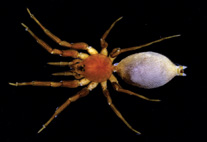Abstract
A new braconid genus from the subfamily Doryctinae, Mexiare gen. nov. (type species M. toledoi sp. nov.) is described from the state of Morelos in Central Mexico. The described species of this genus is characterised by having immovably fused first and second metasomal tergites, a feature also present in species of two Oriental (Arhaconotus Belokobylskij and Mimipodoryctes Belokobylskij) and one Neotropical (Iare Barbalho et Penteado-Dias) genera. The new genus, however, can be distinguished from the Neotropical Iare by the presence of a semi-oval basal area on the second metasomal tergite, distinctly short submedial (subbasal) cell of hind wing, more than three hamuli, considerably short second radiomedial (submarginal) cell, narrow radial (marginal) cell of fore wing and mostly smooth mesoscutum. A phylogenetic analysis among doryctine genera based on two gene markers (28S and COI) placed Mexiare gen. nov. within a previously recovered major South American clade, though its relationships with other taxa remain unclear.

